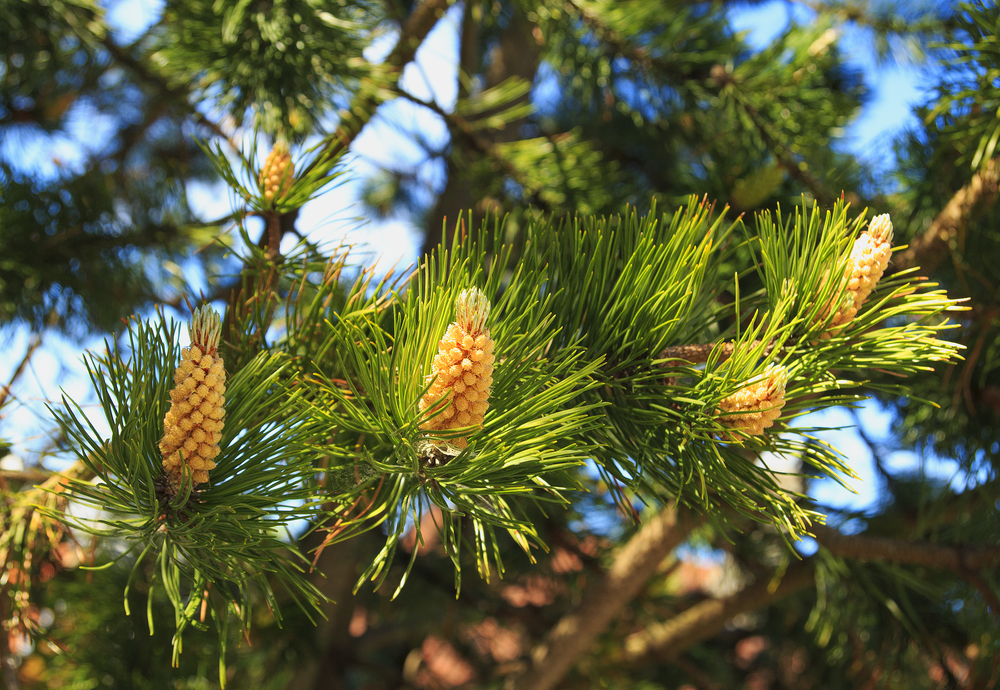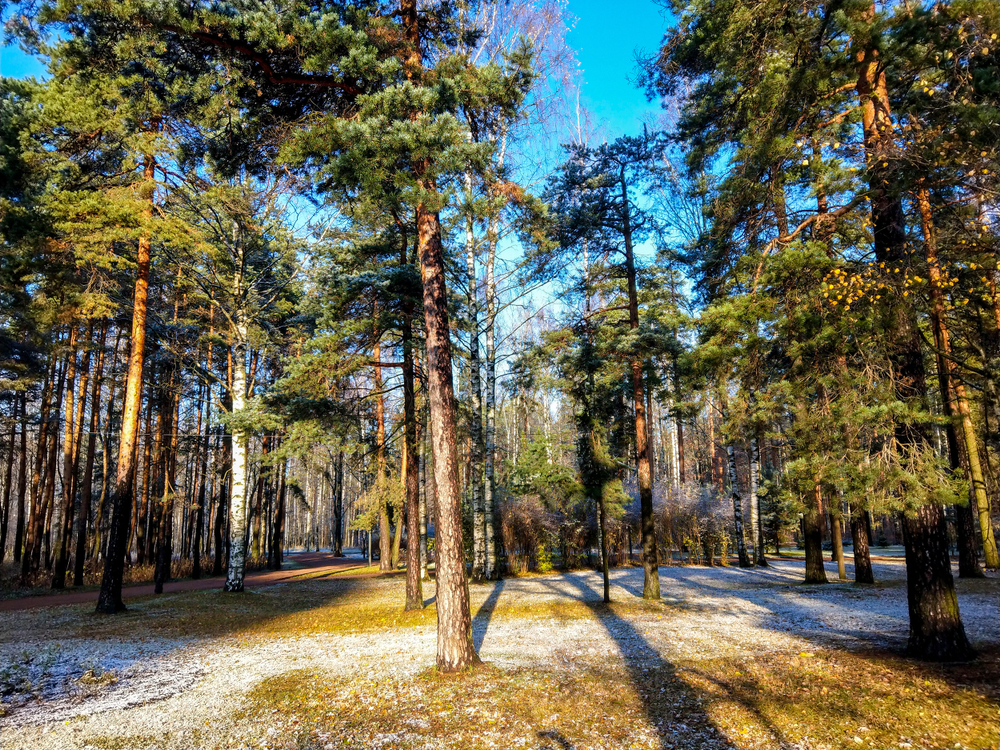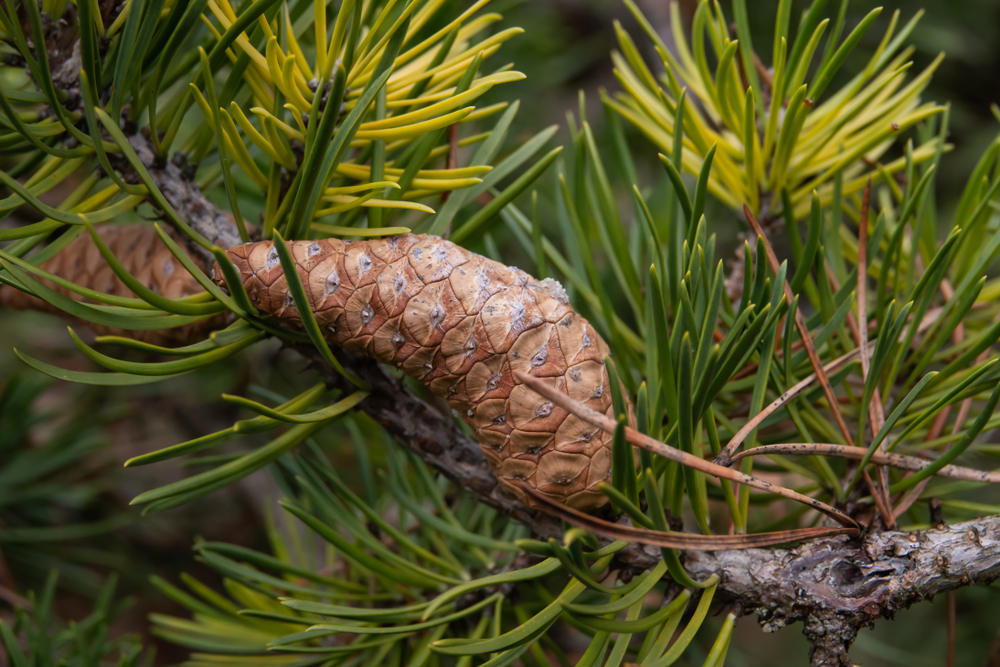Although the Minnesota Department of Natural Resources lists 53 native tree species, the pines are the most famous. Minnesota is home to three species of native pine trees. Before 1900 they covered half of the state, and logging was the main driver of the state’s economy.
Minnesota Pine Trees
Let’s take a look at the three species of Minnesota Pine Trees.
Eastern White Pine
When Minnesota became a state, over half its land area (31 million acres) was covered in forest. To loggers, the giant, straight white pine was like striking gold.
White pine reaches 80 – 100 feet in height and 2 ½ – 3 feet in diameter. They are primed and ready to harvest when 40 – 70 years old.
The amount of white pine lumber taken out of Minnesota is truly amazing. The year 1900 alone saw the harvesting of 2.3 billion board feet of lumber. That’s enough lumber to circle the equator with a 9-foot wide belt.
Note: A board foot of lumber is nominally 12” wide x 12” long x 1” thick.
Red Pine (Norway Pine)
The red pine is the state tree of Minnesota. In 1953, it was called “a sturdy and majestic tree of long life.” And it is resistant to disease and insects. The red pine is among the most populous trees in Minnesota.
The red pine typically reaches 60 – 68 feet high, with heights over 100 feet not uncommon. The diameter of mature trees is 30 – 40 inches.
These trees produce much harder wood than Minnesota’s other pine trees. Harvested Red Pines go toward bridge construction, building construction, and pilings.
The tree is found in northern and northeastern Minnesota. It is popular for reforestation because of its disease and insect-resistant qualities. It will grow almost anywhere as long as it is not shaded.
One of the reasons it may be called a Norway pine is that the early settlers might have mistaken it for a Norway spruce. For more information, please see the Minnesota Department of Natural Resources.
Jack Pine
Jack pine is mainly used as pulpwood. Although its relatively small diameter coupled with a relatively straight branchless trunk made it a popular choice for telegraph poles, power poles, and fence posts.
More recently jack pine is being used to make lath, box material, craft paper, and more and more as lumber. It is also used extensively for windbreaks because of its hardiness and shade intolerance
Jack pines are the most common pine in Minnesota. They live in fire-dependent ecosystems, meaning the cones need fire to open and reproduce. It is native to Minnesota, Wisconsin, Michigan, and much of Canada.
Given a chance, the trees will grow 25 – 60 feet high with a diameter between 8” and 20”. You will often find pure stands of jack pine on poor sandy soil. They are very hardy and are usually the first pine to populate burned land. For more information please see the Minnesota Department of Natural Resources.
What Is the Future of Pine Trees in Minnesota?
Having reduced the white pine acreage from 3,500,000 to 67,500 acres (around 2% of the original) by 1990, the state, industry, native landholders, and Minnesota citizens began sustainable forestry and reforestation efforts.
Forestry companies are now harvesting oak and aspen–not just pine. And state law requires companies to plant a new seedling for each tree harvested. In some jurisdictions, like Alberta, Canada, the requirement is 1 ½ seedlings for each harvested tree.
According to the Minnesota Forestry Industry, an average of 30 white pine seedlings are planted for each tree harvested.
Red pine and jack pine are difficult to reforest because they generally require fire to germinate. They also do not tolerate shade very well. As a result, these trees are often reseeded on tree farms. Sometimes this does not work out well because they seem more susceptible to pests in this environment.
Additionally, some state programs are succeeding at restoring the native ecosystem of red and white pines. And the Red Lake Ojibwa Band is working on getting 50,000 acres reseeded.
All in all, the future of Minnesota’s pine trees appears to be in good hands.


